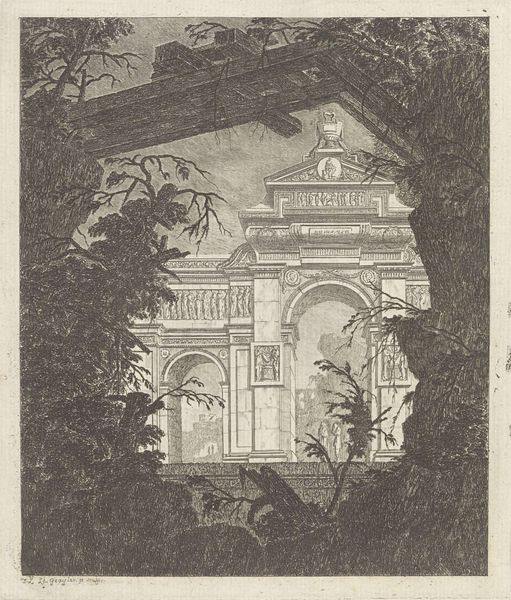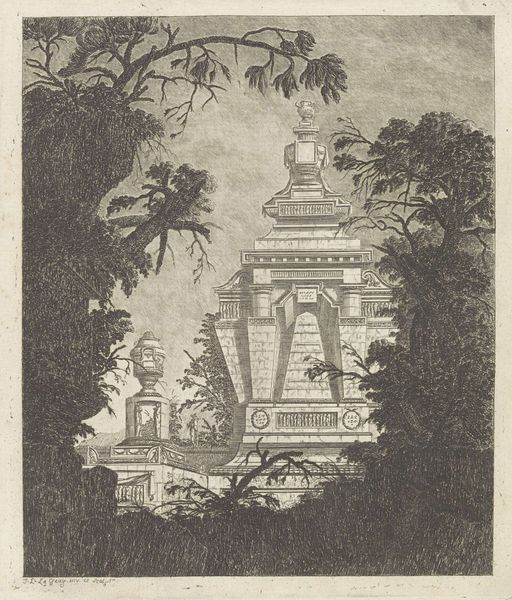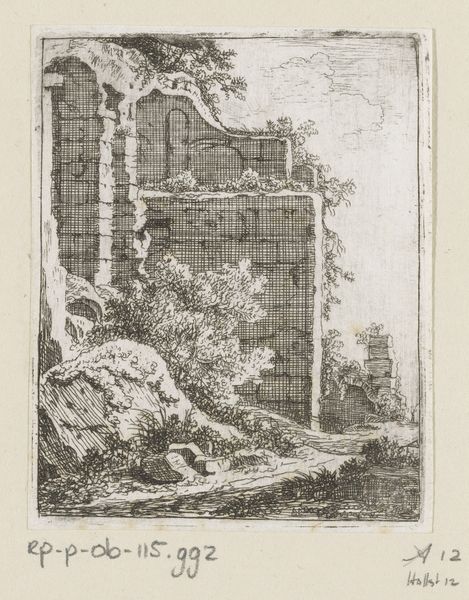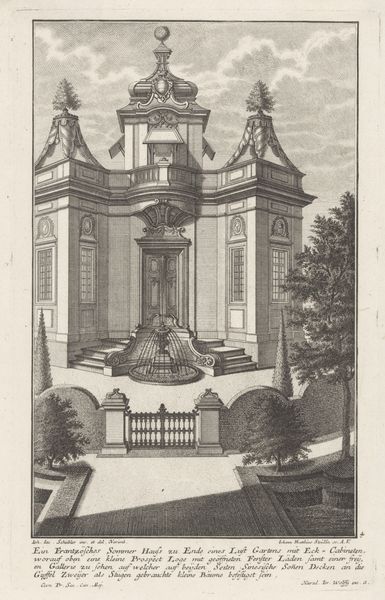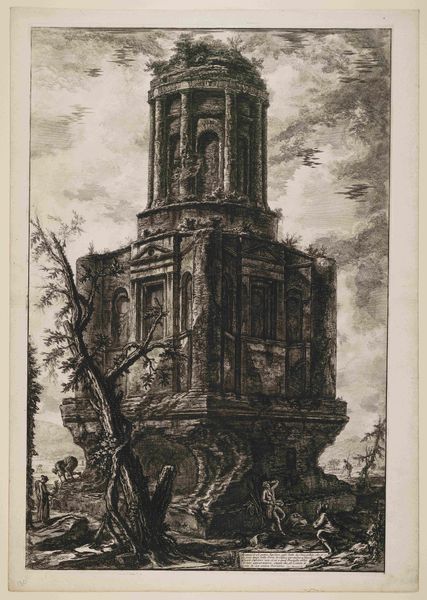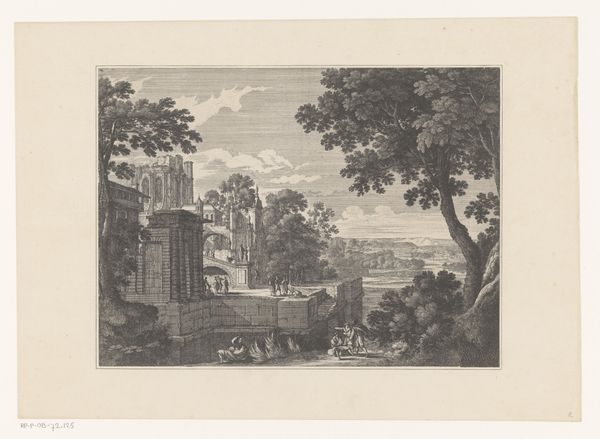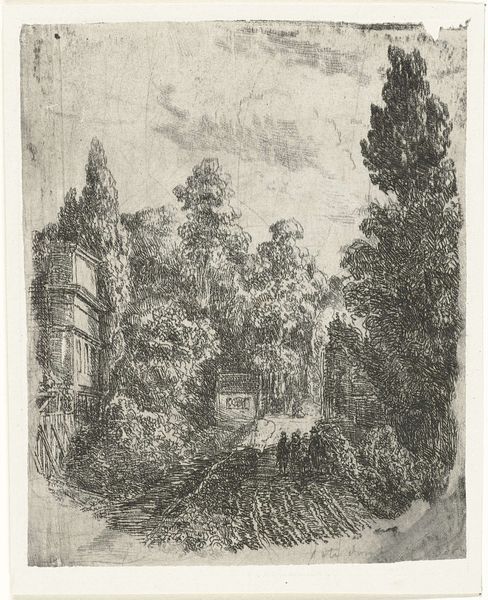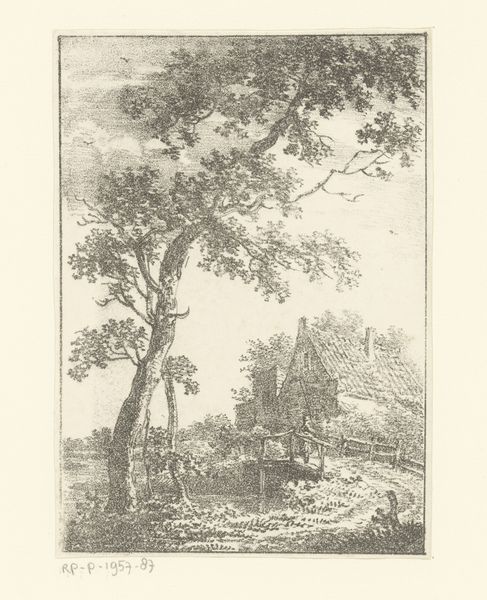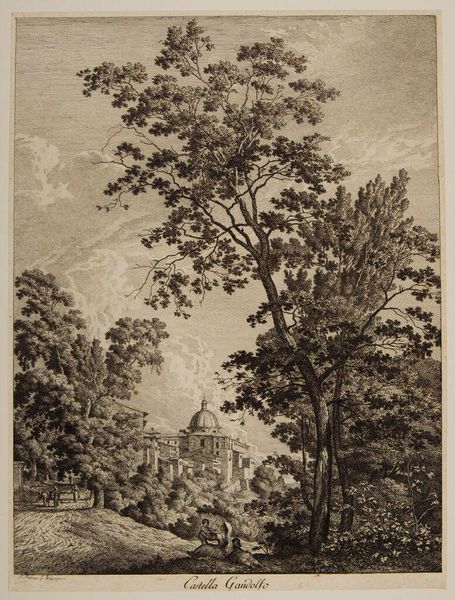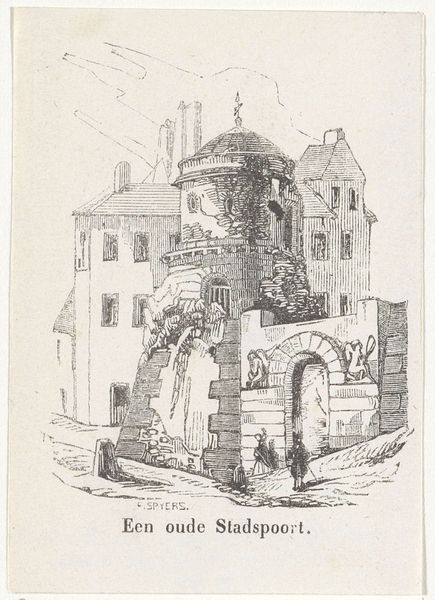
print, etching, engraving, architecture
#
neoclacissism
# print
#
etching
#
landscape
#
form
#
classicism
#
line
#
cityscape
#
history-painting
#
engraving
#
architecture
Dimensions: height 195 mm, width 165 mm
Copyright: Rijks Museum: Open Domain
Editor: This etching, "Tombe met groteske vaas" by Jean Laurent Legeay, from around 1770, depicts a rather imposing tomb set within what appears to be a dense, almost overgrown landscape. The tomb itself, topped with a grotesque vase, strikes me as both grand and somewhat melancholic. What symbolic weight do you think Legeay was trying to convey? Curator: That melancholic feeling is key. Notice how the wildness of the landscape contrasts with the rigidly defined Neoclassical architecture. It creates a tension, doesn't it? The vase, prominently displayed, acts as a vessel, but what does it contain? Consider that Legeay and others like Piranesi were fascinated by Rome's decay, reflecting on vanished empires and the ephemerality of human achievement. Is the tomb meant to stand as a memory, or a warning, or both? Editor: So, the vase isn't necessarily beautiful in a conventional sense; its "grotesqueness" adds to that feeling of unease? Curator: Exactly. Grotesque, in this context, hints at the commingling of disparate, even discordant, elements. Does it suggest the impossibility of containing death, or perhaps the absurdity of trying to immortalize the mundane? And notice those figures flanking the vase - do they comfort or threaten? Editor: I hadn’t considered them threatening before, but now that you point it out...It’s almost as if they’re guarding something terrible. The setting, then, is critical, informing that sense of foreboding and decay through visual symbols? Curator: Precisely! Legeay orchestrates these architectural and natural forms to invite reflection on human vanity, on how nature reclaims even the most assertive human constructions. The power of the image lies in this constant visual dialogue. Editor: This really changes my understanding; it’s not just a pretty landscape, but a carefully constructed visual statement. Thank you.
Comments
No comments
Be the first to comment and join the conversation on the ultimate creative platform.
